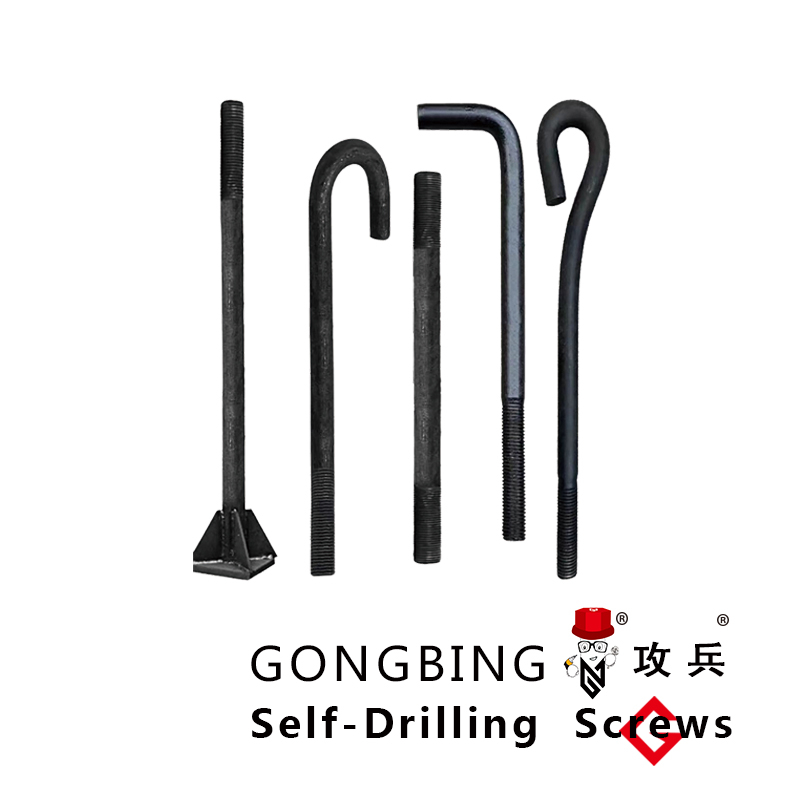Understanding Foundation Bolt Dimensions and Their Importance in Construction Applications
Understanding Foundation Bolt Sizes A Comprehensive Guide
Foundation bolts are critical components in construction, designed to anchor structural elements to the foundation. They are integral in ensuring the stability and integrity of buildings, bridges, and various infrastructures. Choosing the right sizes and types of foundation bolts can significantly affect the safety and durability of a structure. This article delves into the essential aspects of foundation bolt sizes, their importance, and factors that influence their selection.
Importance of Foundation Bolts
Foundation bolts secure different structural components, such as columns and beams, to concrete footings. By providing a stable connection, they help resist various forces, including wind, seismic loads, and gravity. A properly sized and installed foundation bolt can make a significant difference in a structure's performance, particularly in regions prone to earthquakes or strong winds.
Common Foundation Bolt Sizes
Foundation bolts come in various sizes, typically specified by their diameter and length. The most common sizes range from 1/2 inch to 1 inch in diameter, with lengths varying from a few inches to several feet. Standard bolt sizes are often categorized by their grade, which indicates their strength and load-bearing capacity. For instance, Grade 2 bolts are suitable for light-duty applications, while Grade 5 and Grade 8 bolts offer higher strength for more demanding scenarios.
Factors Influencing Bolt Size Selection
1. Load Requirements The primary factor in selecting foundation bolt sizes is the load they need to support. Engineers must calculate the expected loads, including dead loads (permanent/static loads) and live loads (temporary/dynamic loads), to determine the appropriate bolt size and strength.
foundation bolt sizes

2. Soil Conditions The type of soil and its bearing capacity play a pivotal role in sizing foundation bolts. Sandy or unstable soils may require larger or more robust bolts to withstand potential shifting, while solid rock may allow for smaller sizes.
3. Environmental Factors In areas with extreme weather conditions, such as high winds or seismic activity, larger foundation bolts may be necessary to ensure stability. The local building codes often dictate additional requirements based on regional hazards.
4. Building Codes and Standards Compliance with local building codes and engineering standards is crucial in selecting the right foundation bolt size. These regulations often provide specifications on the materials, coatings, and sizes of bolts to ensure safety and performance.
5. Corrosion Resistance The environmental exposure of a structure can also affect bolt selection. In corrosive environments, including coastal areas or industrial settings, bolts may need to be galvanized or made from stainless steel to resist rust and deterioration.
Installation Considerations
The installation of foundation bolts is as critical as their selection. Proper placement and alignment ensure that the bolts can effectively transfer loads. Foundation bolts should be installed before the concrete is poured, with adequate embedding depth to maximize their effectiveness. Furthermore, torque specifications and tensioning must be adhered to during installation to prevent loosening over time.
Conclusion
Selecting the appropriate foundation bolt sizes is a vital element of structural engineering that impacts safety, stability, and longevity. By considering factors such as load requirements, soil conditions, environmental factors, and compliance with building codes, engineers can make informed decisions that ensure the success of construction projects. Understanding the intricacies of foundation bolts not only enhances engineering practices but also contributes to the overall safety of structures we rely on every day. Whether you're a seasoned engineer or a newcomer to the field, grasping the nuances of foundation bolt sizes is essential for effective construction.
-
Wedge Anchor Bolts: Secure Fastening SolutionsNeiegkeetenAug.05,2025
-
Insulation Fixings: Secure and Durable SolutionsNeiegkeetenAug.05,2025
-
Full Threaded Studs: Versatile Fastening SolutionsNeiegkeetenAug.05,2025
-
Expanding Fasteners: Secure and Reliable SolutionsNeiegkeetenAug.05,2025
-
Butterfly Toggle Anchors: Secure and Easy to UseNeiegkeetenAug.05,2025
-
Bracing Solutions for Steel StructuresNeiegkeetenAug.05,2025
